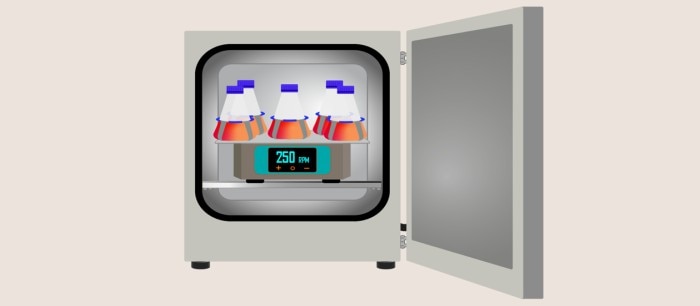MENU
AE | USD
AE | USD
-
- Benchtop Centrifuges
- Floor-Standing Centrifuges
- Refrigerated Centrifuges
- Microcentrifuges
- Multipurpose Centrifuges
- High-Speed Centrifuges
- Ultracentrifuges
- Concentrator
- High-Speed and Ultracentrifuge Consumables
- Centrifuge Tubes
- Centrifuge Plates
- Device Management Software
- Sample and Information Management
You are about to leave this site.
Please be aware that your current cart is not saved yet and cannot be restored on the new site nor when you come back. If you want to save your cart please login in into your account.
No results found
Search Suggestions

What is a CO2-resistant shaker?
Lab Academy
- Cell Biology
- Cell Culture
- Lab Routine
- Efficiency
- Contamination
- CO2 Incubators
- FAQ
This article was published first in "Inside Cell Culture" , the monthly newsletter for cell culture professionals. Find more interesting articles about CO2 incubators on our page "FAQs and material on CO2 incubators" .
A CO2-resistant shaker is used to agitate a small number of shake flasks with mammalian cells in suspension culture inside a CO2 incubator. These cultures are, for example used for the expression of recombinant proteins or the production of bioreactor starter-cultures (inoculum). For higher throughput, CO2 incubators with an integrated shaker are used.
The term “CO2-resistant shaker” itself that is often used, also by manufacturers, is clearly misleading as it doesn´t address the main challenge these devices are facing and overcoming inside a CO2 incubator. The elevated CO2-concentration itself inside the incubator chamber is not the main challenge. However, together with the high relative humidity (usually ~95%) CO2-resistant shakers face a slightly acidic atmosphere that is highly corrosive. In addition, this humid atmosphere can lead to electronic malfunctions and spills of culture medium entering the device may form a contamination nucleus that is hard to detect and remove. Therefore, in contrast to standard open-air shakers, a CO2 resistant shaker comes with design specialized for the use inside a CO2 incubator.
Features and limitations of a typical CO2 resistant shaker:
Read more about the proper selection of a CO2 resistant orbital shaker in our White Paper .
A CO2-resistant shaker is used to agitate a small number of shake flasks with mammalian cells in suspension culture inside a CO2 incubator. These cultures are, for example used for the expression of recombinant proteins or the production of bioreactor starter-cultures (inoculum). For higher throughput, CO2 incubators with an integrated shaker are used.
The term “CO2-resistant shaker” itself that is often used, also by manufacturers, is clearly misleading as it doesn´t address the main challenge these devices are facing and overcoming inside a CO2 incubator. The elevated CO2-concentration itself inside the incubator chamber is not the main challenge. However, together with the high relative humidity (usually ~95%) CO2-resistant shakers face a slightly acidic atmosphere that is highly corrosive. In addition, this humid atmosphere can lead to electronic malfunctions and spills of culture medium entering the device may form a contamination nucleus that is hard to detect and remove. Therefore, in contrast to standard open-air shakers, a CO2 resistant shaker comes with design specialized for the use inside a CO2 incubator.
Features and limitations of a typical CO2 resistant shaker:
- Low heat dissipation to avoid interference with the temperature control of the CO2 incubator
- Sealed electronics and mechanical parts to avoid malfunctions, corrosion, and contamination inside
- Corrosion-resistant exterior made of stainless steel or specialized plastics like Acrylonitrile butadiene styrene (ABS) that can also be disinfected
- Platform capacity and drive design limited to shake a few 1L flasks (low throughput applications)
- Some devices are limited to 200 rpm and may therefore not be suitable for protocols with higher rpm of plates and tubes
- Limited use with parallel cultivation of vibration-sensitive adherent cells like stem cells or primary cells due to transfer of vibrations
Read more about the proper selection of a CO2 resistant orbital shaker in our White Paper .
Read more
Read less
